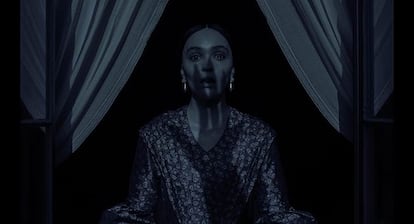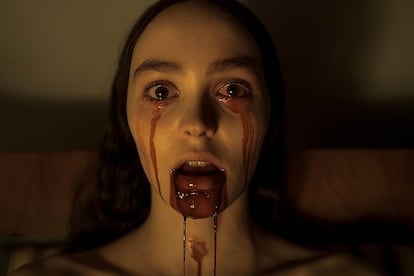Let’s be clear from the beginning: this new version of Nosfer Directed by Robert Eggers may only surprise (and, being adventurous, passionate) to those who have not seen and analyze the homonymous masterpiece of FW Murnau of 1922, and the formidable film by Werner Herzog Nosferatu, vampire of the night, of 1979. Because the best of this rereading that opens was already in the others. Eggers, idolized by fans and most of the criticism after the very interesting but excessively pompous The witch (2015) y The lighthouse (2019), approaches to terror since the greatness of the form, although somewhat weighed (especially the second) by an altilocent tone and a tiring narration, has approached the vampiric myth even with some winks to other versions of Dracula, Bram Stoker’s immortal novel, origin of everything.
Thus, the taking of the arrival of the Count Castle in the death carriage has the same framing and such an artisanal flavor as that of that moment in the version of Stoker’s work directed by Tod Browning in 1931. But this is just an almost unimportant detail, a insinuation for understood. The relevant thing is that no one can completely admire the photographic work of the Eggers film without thinking about what was achieved with expressionism, daylight and poetry of evil in the version of Murnau, which in order to avoid demand for not possessing the rights of the book (something that finally did not achieve), England had to change for Germany, already Dracula by Orlok, among other issues. And even less, assess the pictorial touch of German romanticism, to caspar David Friedrich, in the sequences of the cemetery, when these images are traced from those of Herzog in photo, texture and staging.
Beyond the excessive allusions to the Herzog version, and the almost preventive associations with Murnau’s in the field of shadows, the worst fits in Eggers’ approach is his anomalous mixture between naturalism and the show, between the recovery of the atavistic and the encounter with the most advanced technology. And in that cobbled road, with which the trend of Eggers is confirmed that his films are excessively monocordes in his screaming, it is discovered that his work lacks his own identity. On the one hand, much of the Count Orlok dialogue when he communicates telepathically with the woman is in Dacio, a dead language of the Balkans. But, on the other, a good part of these dialogues are accompanied by CGI infected figurations, of conventional computer created images. On the one hand it has been made public that the unrecognizable Bill Skarsgard has worked his vocal record with a coach of opera to lower an eighth its voice timbre. But, again, on the other, certain shouting parliaments continue to sound in the typical distorted voice with technology, that which has never worked well in film or character some, except in Darth Vader.

Formally unequal, with specific disturbing images, but too debtor of previous approaches to the Stoker universe, this Nosfer It becomes strong, however, in the rough sexual territory. In a kind of erotic of certainly daring dirt. In the most animal lust. That they had already played with the tip of the fingers other versions (those of Fisher and Coppola), but that here puts the arm to the bottom with its fusion between the decrepitude, the concupiscence, the courage and the pain. Above all, confronted with indolence, the self -absorption and the emotional insubstantiality that Nicholas Hault prints to his character. As if Eggers were telling us that in reality everything is a matter of bad desire and pleasure; of unstoppable lasciviousness that comes out of the deepest and deepest self of this woman and her connection with evil, and in that sense the sequence of sex between husband and wife, finally with the necessary faith in the joy by him, would become confirmation of the subtext. Orlok’s shadow is a mantle of Fornicio, a dependence on a fierce and toxic masculinity that can only be detached with death. A connection with the social contemporaneity of remarkable reach and arisca ambiguity.
Nosfer
Address: Robert Eggers.
Gender: terror. USA, 2024.
Department: Lily-Rose Depp, Nicholas Hoult, Bill Skarsgard, Aaron Taylor-Johnson.
Duración: 132 minutes.
Premiere: December 24.

